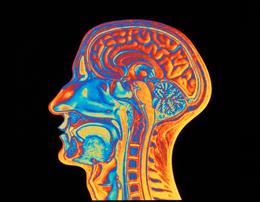As always, it's a clash of worldviews an perspectives. The authoritarian, absolutist perspective cannot tolerate Obama's moral relativism, nor can they tolerate his egalitarian vision for government. It is not going to get better any time soon.
The Forever Culture WarEven as we make progress on specific issues, the broader culture war seems to get uglier and uglier.
Ann Friedman | September 13, 2010
Protesters celebrating California's gay-marriage ban at the state Capitol in Sacramento. (Flickr/Fritz Liess)
In a long and often-cited Atlantic cover story published during the 2008 presidential race, Andrew Sullivan announced that he was supporting Barack Obama because his election would put an end to "the war within America that has prevailed since Vietnam and that shows dangerous signs of intensifying ... a war about war -- and about culture and about religion and about race." Like Sullivan, voters were receptive to Obama's promises to be a post-ideological president who would defuse America's most explosive political elements.
Yet in many ways, the opposite has happened. Today a particularly nasty strain of right-wing extremism is flourishing: draconian immigration policies, heated opposition to the establishment of an Islamic community center in Lower Manhattan, the Tea Party movement, claims that the president is a Muslim. As the sun set on the Bush years, it seemed like this brand of conservatism was becoming extinct -- despite the persistence of talk-radio hate speech and the occasional right-wing crackpot politician. Now it's back, and it's more mainstream than ever.
What happened? The bottom fell out of the economy. Sure, economic indicators didn't look great back when Obama was campaigning, either. But one of the reasons why I found Sullivan's thesis almost persuasive is that, against all odds, Obama's "change" narrative was resonating positively at a time when the only changes most voters had experienced in recent years were negative. In the months since his inauguration, as Americans have continued to lose their jobs and houses in droves -- and don't expect to get either back any time soon -- there is a palpable feeling of fear. This, coupled with long-simmering anxiety about demographic change, is driving the extremism we now see gaining traction beyond Fox News and virtually taking over the Republican Party.
In other words, it's an appropriate moment to re-evaluate Sullivan's election thesis. Ben Smith and Jonathan Martin argued in Politico recently that Obama actually ended one culture war -- the one over gay rights and abortion -- and stepped into another. Now, they write, the fight is over "the role of government and the very meaning of America." But really, this is nothing new. For women, people of color, LGBT people, poor people -- those of us whose very lives were on the line in what Smith and Martin define as the "old" culture war -- it has always been about who is a "real American."
"Real Americans are defined as much as [by] what they're not as [by] what they are," writes Amanda Marcotte on her blog, Pandagon. "The enemies list is long: racial minorities (especially non-compliant ones), immigrants, foreigners in general, feminists, liberals, poor people -- yes, especially poor people, who haven't known their place in like 100 years at least -- men who aren't completely wrapped up in nonstop demonstrations of proof they're Real Men, gay people, college professors, activists who try to improve people's lives, honestly you could go on."
Economic strife doesn't just restart the culture war. It reorders the conflict, shifting both the issues at stake and the targets of the moment. One of the great errors of defining the culture war of the 1980s and 1990s as primarily about women's and gay rights is that liberals got the idea that this was a war we could win. Just give it time, and Americans would become more LGBT-friendly and more accepting of abortion rights, and we would have somehow mended America's deepest ideological rifts. In some ways, that is proving true. Affirmative action, welfare, women in the workforce, "political correctness" -- these were all once battles in the culture war. Today we have a biracial president. Women's right to work and be compensated fairly is generally accepted. Each poll on marriage equality is more encouraging than the last. These particular issues are falling off the agenda.
Even as we make progress on specific issues, however, the broader culture war seems to get uglier and uglier. The underlying sentiment that has fueled this conflict from the start -- that only certain Americans are "real Americans" who deserve rights and respect -- has not gone away.
The issues at the forefront of the culture war change with America's economy, demographics, and leaders. But much like the war on terrorism, this war is perpetual. And it's high time we at least realize that progress on a set of issues -- or the election of a pathbreaking president -- does not mean we have won. Until we live in a just society that treats all Americans with dignity, there's always more work to do.










